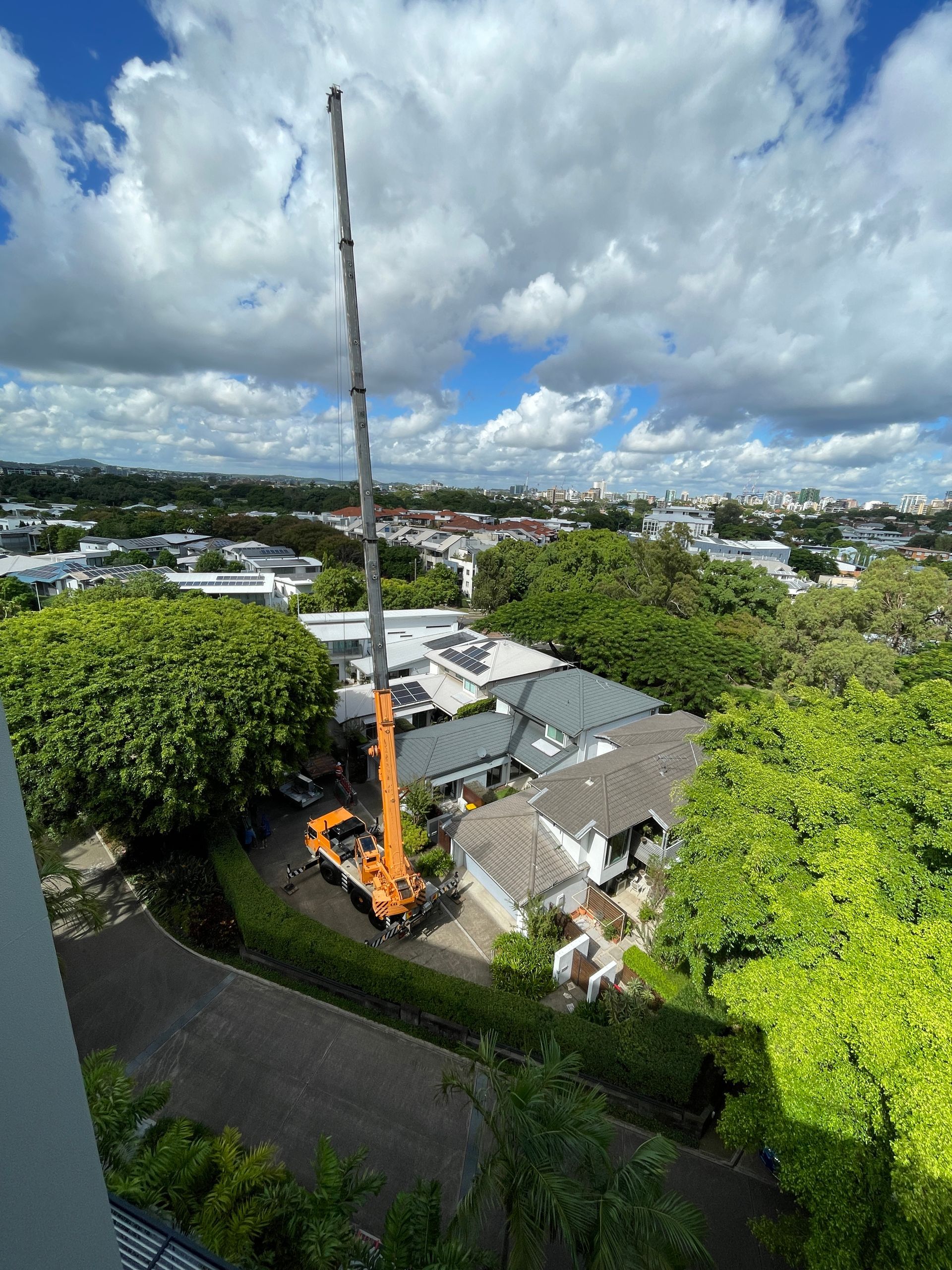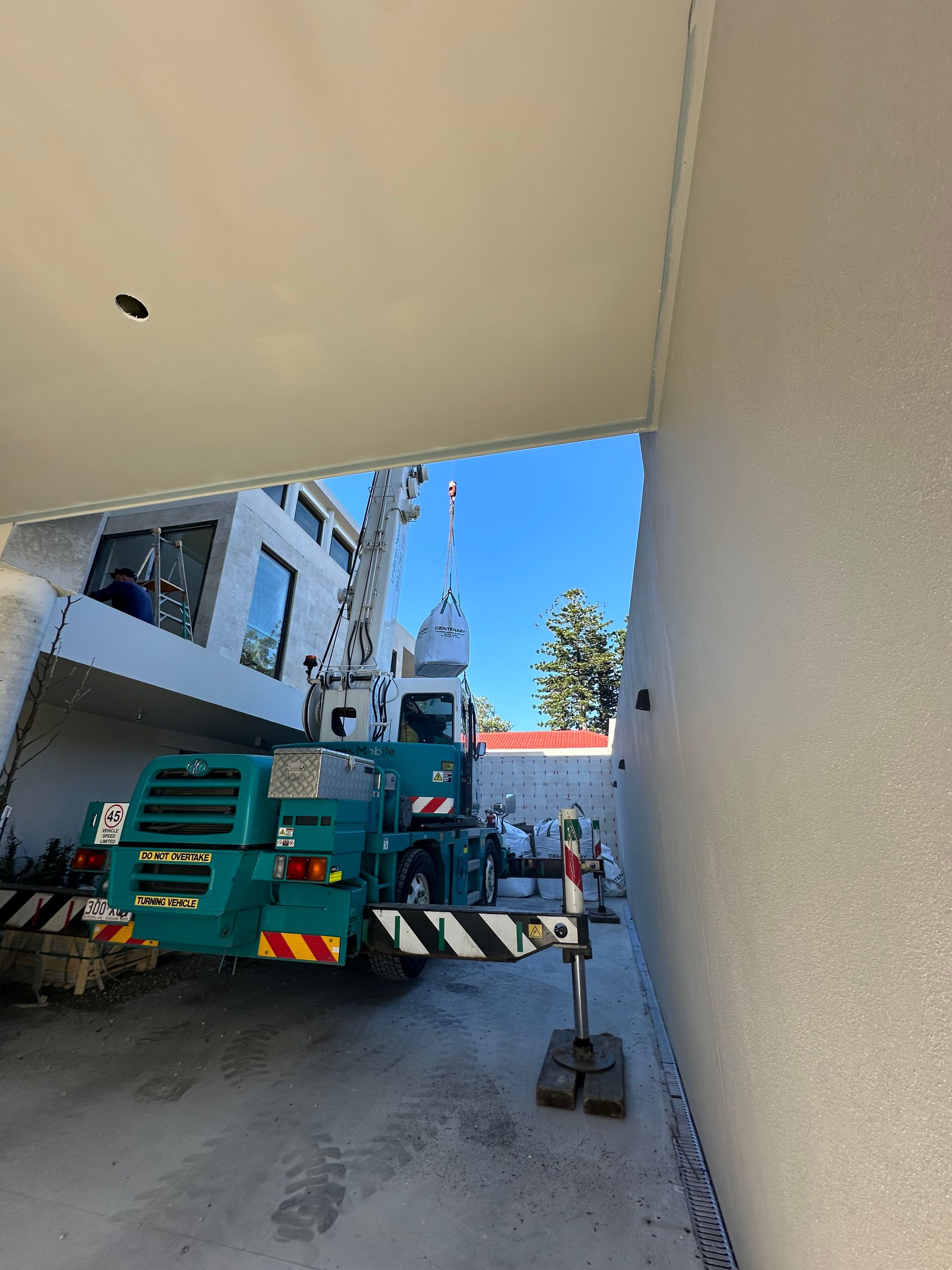Telescopic Boom Cranes Explained

In the simplest of terms, a crane is a machine that is used to lift and move heavy loads, machines, materials, and goods for a variety of purposes. From construction to manufacturing to shipbuilding and material loading, cranes are used in a wide variety of settings, sectors and projects, and have revolutionised safety in the workplace.
While the world’s first cranes can be traced all the way back to ancient Mesopotamia, these days they are generally equipped with a hoist rope, wire ropes or chains, and shelves. However, many mobile and stationary cranes often feature an extendable telescopic boom - even though most people and even operators don’t understand exactly how they work, or why they make heavy lifting easier, more convenient, and ultimately safer.
How A Telescopic Boom Works In Cranes
As far as mobile cranes go, there are generally four principal types: truck mounted, rough terrain, crawler or floating. Many mobile cranes feature an extendable telescopic boom, making them an incredibly convenient option to use on worksites and other sites where space may be limited, like city areas. Though not all telescopic boom cranes are mobile cranes, many of them are truck-mounted for easy transport.
A boom is the steel arm of the crane, and is arguably the most vital component that allows the machine to hold and lift objects to a certain height. As the object is lifted, the boom extends to the desired height.
If a crane boom is telescopic, it features boom sections that extend telescopically, or having or consisting of concentric tubular sections designed to slide into one another. In turn, a crane that has a telescopic boom has greater horizontal outreach than any other type of aerial platform. Perfect for use when operators encounter different and difficult angles, telescopic boom cranes provide operators with maximum horizontal and vertical outreach.
During the boom’s extension, a hydraulic cylinder - or another mechanism if relevant - does all the hard work, making these machines so valuable on modern work sites. It enables the movement of the tubes, so the thinner ones inside get pushed outward. In turn, this makes the boom longer, and as it extends, it can reach greater heights. Unsurprisingly, it’s also this very same mechanism that enables the boom to retract. However, the major perk of a telescopic boom crane is that when it’s at its original length of only the base section, it’s easiest to manoeuvre the crane around just about any job site.
Telescopic boom lifts are also designed to boost productivity, with the ability to get into working position quickly and easily. When deployed on job sites, they’re a popular piece of machinery to use for instant scaffolding, telecommunication maintenance, external painting and decorating, arborist works, steel cladding, and much more. As a general rule, a telescopic boom crane is able to go all the way up to a maximum vertical reach of forty one metres, and a horizontal reach of twenty four metres.
Opting for mobile crane hire that features a telescopic boom is often a great way to cut down on the expenses of a construction project, and is usually the cheaper alternative when compared to the costs of buying, storing and maintaining one yourself.
However, these benefits all hinge on one simple fact - you need to avoid renting a lemon. More often than not, a less than ideal mobile crane hire company could very well cause more headaches than they do solutions, so it’s important for consumers to do their research and partner with a reputable provider - but where do you find one?
Sourcing Telescopic Boom Cranes In South East Queensland
Lindores Mobile Cranes (LMC) are a mobile crane and labour hire business that has unequalled experience in the construction industry spanning two generations. In operation since 2007, we’re a family owned business and are also proud owners of Brisbane’s only Humma crane.
Google reviews and even peers within the industry are always a good starting point to ensure that a mobile crane hire company is a reputable business provider. At Lindores, we’re not only too happy to show you the feedback from our customers, but it’s something that we’re actually quite proud of.
At LMC, we pride ourselves on knowing what our customers require, and aren’t afraid to think outside of the box with suggestions in order to reduce costs and increase productivity. If you would like to explore your options regarding crane hire in South East Queensland or aren’t quite sure where to start, get in touch with us today.
The Liftout

When people think of crane hire, they often picture towering construction sites or major infrastructure projects. But across Southeast Queensland, an increasing number of residential builders are considering mobile cranes as an essential tool onsite. At Lindores Mobile Cranes , we’ve seen first-hand how reliable crane hire can simplify and speed up residential builds. Smarter Lifting for Modern Home Builds As homes get larger, blocks get smaller, and architectural designs become more complex, the need for precision lifting has never been greater. Roofing materials, structural steel, and even prefabricated walls often need to be placed quickly and safely in hard-to-reach locations. Our mobile cranes, including Mini Crawlers and Frannas , make light work of these tasks. This saves builders time, reduces manual handling, and improves site safety. With our experienced operators on board, there’s no guesswork, no delays, and no unnecessary risk. Explore our mobile crane fleet Tight Access? No Problem. Many of Brisbane’s older suburbs, like Paddington, Spring Hill, and Petrie Terrace, come with tight driveways, steep slopes, and minimal space for materials. That’s where compact mobile cranes and mini crawlers shine. They’re designed to work in confined spaces without compromising lifting capacity or site safety. We regularly help builders lift roofing, frames, pools, and more into hard-to-access sites, without the need for expensive site modifications or lengthy manual labour. Supporting the Sunshine Coast and Gold Coast Residential Market It’s not just Brisbane where we’re seeing demand. Across the Sunshine Coast, with its steep hinterland blocks, and the Gold Coast, where many homes are built close to canals or high-density zones, mobile crane hire is becoming a key part of building smarter, safer homes. Crane Hire That Fits the Residential Build Schedule We know how critical timing is for builders. Delays in lifting can hold up entire stages of the project. That’s why we offer flexible booking options, fast response times, and a commitment to showing up when we say we will. It’s part of the reason why so many residential builders across Southeast Queensland trust Lindores Mobile Cranes for their lifting needs. Ready to Lift Smarter on Your Next Build? No matter the project, our team has the equipment and expertise to help. Contact our team today by calling us on 07 3376 0611 or email lmcops@lmcranes.com.au.

Urban construction across Brisbane’s inner suburbs, like Brisbane City, Fortitude Valley and West End, presents a unique challenge. Limited street access, tight driveways, weight-restricted concrete slabs, and close proximity to neighbouring buildings mean that traditional mobile cranes simply won’t fit. At Lindores Mobile Cranes , we’ve seen how mini crawler cranes are transforming the way construction is carried out on these sites. Compact, precise, and highly mobile, these machines are fast becoming essential for projects across Queensland . Rethinking Lifting for Urban Environments In city and suburban projects, space is at a premium. Construction teams often deal with narrow laneways, busy streets, or strict local council rules that make large-scale crane operations unfeasible. In some cases, access is so restricted that conventional lifting equipment can’t get anywhere near the job site. That’s where mini crawler cranes come in. Built specifically for tight and complex environments, these machines allow builders to lift heavy materials safely and efficiently, without the need for wide access or extensive setup areas. See our full fleet of mobile and mini cranes. Compact Size, Serious Capability Despite their size, mini crawler cranes don’t compromise on performance. Designed to operate in confined spaces, they’re able to move through narrow driveways and even fit inside buildings if required. Their rubber tracks reduce surface pressure, making them safe for use on rooftops or polished concrete slabs, and their zero tail-swing allows for safe manoeuvring in environments with little margin for error. These features make them ideal for everything from steel erection and glass installation to HVAC placement and residential renovations. We’ve supported projects as varied as boutique homes in New Farm and shopfront fit outs in Surfers Paradise , proving how versatile these compact machines really are. Designed for the Modern Job Site Mini crawler cranes are an increasingly popular choice for residential builds, renovations, and even commercial fit outs across Queensland. Their small footprint and fast setup time mean less downtime, lower costs, and fewer headaches when working in restricted-access environments. Ready to Lift Smarter in Tight Spaces? At Lindores Mobile Cranes , we’ve helped countless clients across Brisbane , the Gold Coast , and South East Queensland navigate complex job sites with ease. Our team can advise you on the right crane for your lift, organise pre-lift planning, and provide experienced operators who understand the ins and outs of working in urban environments. Contact our team today by calling 07 3376 0611 or email lmcorps@lmcranes.com.au.

